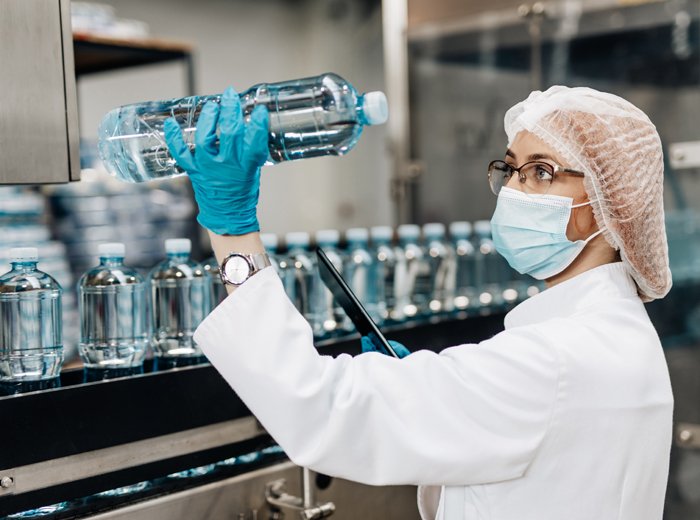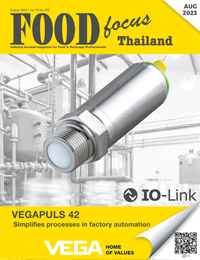Reduce Human Error with Vision Inspection Technology
591 Views |

เทคโนโลยีการตรวจสอบด้วยภาพ ลดข้อผิดพลาดจาก Human Error
By: Natwalinkhol Settapramote, Ph.D.
Department of Agro-Industry
Faculty of Sciences and Agricultural Technology
Rajamangala University of Technology Lanna, Tak
natwalin@rmutl.ac.th


การประยุกต์ใช้เทคโนโลยี AI ในการตรวจสอบด้วยภาพ
1.การตรวจสอบวัตถุดิบทางการเกษตร
วัตถุดิบทางการเกษตรมักมีความแปรปรวนสูง การตรวจสอบผลิตผลทางการเกษตรด้วยเทคโนโลยี AIจึงเข้ามามีบทบาทสำคัญในการตรวจสอบข้อบกพร่อง ตำหนิต่างๆ ความไม่สมบูรณ์ของรูปร่าง สี รวมถึงพื้นผิวที่แตกต่างกัน สามารถคัดแยกผลผลิตที่ไม่ต้องการออกจากกระบวนการผลิตได้ โดยทางคณะวิศวกรรมศาสตร์ สถาบันเทคโนโลยีพระจอมเกล้าเจ้าคุณทหารลาดกระบัง ได้พัฒนาเทคโนโลยี AI เพื่อนำมาใช้ในการพัฒนานวัตกรรม “เอ้กอีเอ้ก” ซึ่งเป็นเครื่องตรวจสอบคุณภาพไข่ (Egg crack detector) ขนาดเล็ก (Portable machine) เพื่อคัดกรองคุณภาพไข่ไก่ตั้งแต่ต้นทางก่อนเข้าสู่กระบวนการฟัก โดยสามารถคัดแยกไข่ที่ไม่ได้คุณภาพ ได้แก่ ไข่ร้าวและไข่สกปรก รวมถึงนำข้อมูลที่ได้นำไปใช้ในการวิเคราะห์สำหรับใช้ในฟาร์มอัจฉริยะต่อไป
2.การตรวจสอบผลิตภัณฑ์ก่อนการบรรจุ
การตรวจสอบคุณภาพของผลิตภัณฑ์ ซึ่งส่วนใหญ่จะเป็นการตรวจสอบข้อบกพร่องของผลิตภัณฑ์ก่อนการบรรจุ ซึ่งสามารถนำไปประยุกต์ใช้ในการตรวจสอบได้ในหลากหลายผลิตภัณฑ์ เช่น แครกเกอร์ที่มีลักษณะไม่สมบูรณ์ตามที่กำหนดไว้ ซึ่งจะแสดงผลเป็นพื้นที่สีแดง (Heatmap) บนหน้าจอคอมพิวเตอร์ ดังภาพที่ 3
นอกจากนี้ ยังสามารถนำมาใช้ในการตรวจสิ่งแปลกปลอมได้อย่างแม่นยำ โดยการใช้กล้องที่มีความละเอียดระดับ 4K ในการตรวจสอบเศษพลาสติกและเส้นผมขนาดเล็กที่มีเส้นผ่านศูนย์กลาง 0.1 มม. ที่อาจปนเปื้อนอยู่ในบะหมี่กึ่งสำเร็จรูปแบบถ้วยก่อนการปิดผนึก
3.การตรวจสอบคุณภาพของระบบการบรรจุ
การตรวจสอบด้วยภาพสามารถนำมาใช้ในการตรวจสอบระบบการบรรจุ โดยใช้เทคโนโลยี AI และกล้องมาใช้ในการตรวจสอบคุณภาพการพิมพ์ รวมถึงความครบถ้วนของข้อมูลบนฉลาก นอกจากนี้ ยังสามารถตรวจสอบคุณภาพของการปิดผนึกและความสมบูรณ์ในการบรรจุ เช่น ฝาแตก มีรอยขีด หรือคราบบนบรรจุภัณฑ์หรือไม่ เป็นต้น โดยบริษัทผู้พัฒนาระบบบรรจุภัณฑ์ ได้ใช้ประโยชน์จาก AI ในการตรวจสอบการซีลแบบใช้ความร้อน เช่น ชนิดของบรรจุภัณฑ์ บรรจุภัณฑ์ที่มีรอยยับ การซีลซ้ำซ้อน (Double seal) หรือการซีลที่ไม่ตรงตามแนวที่กำหนดไว้ เป็นต้น ซึ่งจะแสดงข้อบกพร่องในรูปแบบ Heatmap ดังภาพที่ 4 โดยสามารถตรวจสอบด้วยความเร็วสูงสุดถึง 500 ชิ้นต่อนาที
Application of AI Technology in Visual Inspections
1.Inspection of agricultural raw materials
Agricultural raw materials are often highly volatile, and therefore, AI is extensively being used and plays an important role in detecting defects, flaws, shape imperfections, colors, and different textures, whereby undesired products can then be separated from the production process. Currently, the Faculty of Engineering at King Mongkut’s Institute of Technology Ladkrabang has successfully applied AI technology in the development of their “Egg-E-Egg” innovation, which is a small portable egg crack detector to screen the quality of chicken eggs from the point of origin before entering the hatching process. The device can sort substandard eggs, such as cracked or dirty eggs, and the collected data is then further analyzed for further use in smart farms.
2.Product inspection before packing
The process of product quality inspection focuses on checking for defects before they are packaged. This can be applied to various products, such as sub-standard crackers that deviate from the specified attributes. The result is displayed as a red area (heatmap) on the computer screen.
Additionally, it can also be used to accurately detect foreign matter through the use of a 4K resolution camera to inspect tiny plastic particles and hair strands with a diameter of 0.1 mm, which, if left undetected, may contaminate the cup noodles before the sealing process.
3.Quality inspection of the packing process
Visual inspections can also be used to inspect packing processes through AI and camera technology to check the print quality, including the completeness of the information on the label. Additionally, the quality of the sealing and the integrity of the packaging can be verified, such as whether the lid is broken, if the packaging contains scratches or stains, etc. The packaging process developer has also successfully leveraged AI to inspect heat seals, such as packaging types, packaging with creases, double sealing, or sealings that do not follow the specified path, etc. Defects will be displayed in the form of a heatmap, and inspections can be made at a speed of up to 500 pieces per minute.




